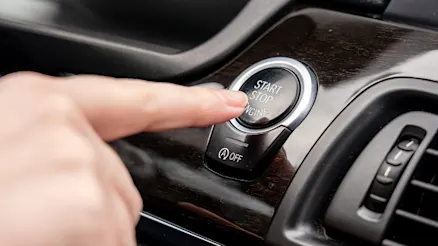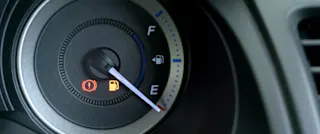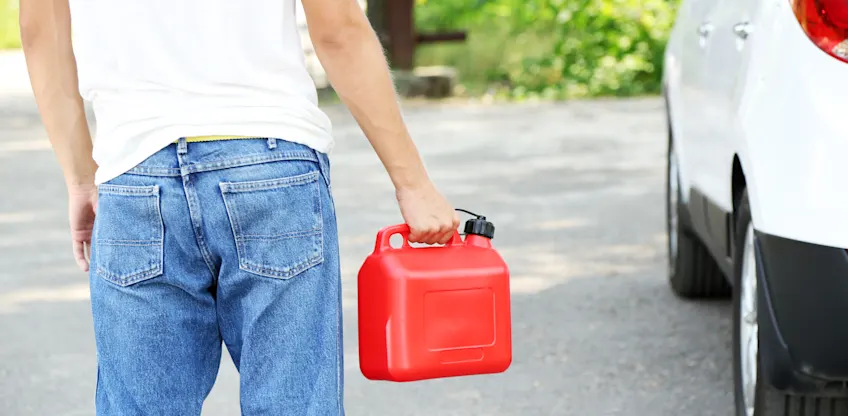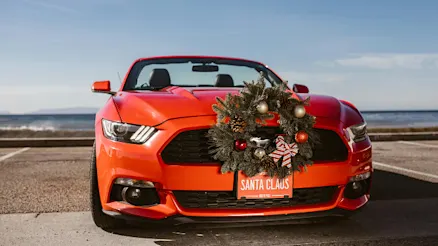
Why does my car behave differently when I start it in the morning?
Ever notice your car feels different in the morning? Learn why cold starts affect performance and how to keep your car running smoothly year-round.

Who amongst us hasn’t nearly run out of fuel before? It could’ve been while waiting for that cheaper fuel day, misreading the fuel gauge, being chaotically busy and putting it off for yet another day, or perhaps just being an eternal optimist.
Sadly, our cars don’t run on wishful thinking – so here’s what to know when you’re running on empty.
Naturally, that handy fuel gauge is the best way of knowing you’re nearing the end of your fuel range. Your fuel light or alarm will generally turn on when you have about 10-15% of fuel left in the tank.
How far can you drive with the fuel light on? That depends on a bunch of factors, including your car type and the road conditions, but could be anywhere from 30 km to over 100 km before you run out of fuel completely.
Once you’re in the danger zone, pay attention. If you start to experience engine sputtering, power surges, or the engine backfiring, that can be a sign you’re running seriously low on fuel. You might notice a loss of power steering or braking. If any of these things happen, it’s best not to ignore it!
So your engine is driving rough or it conks out completely. The first steps are to stay calm, slow down, and pull off to the side of the road or the emergency lane. Put your hazard lights on as soon as possible in this process to warn other road users, and turn the engine off once you’re safely pulled over if it’s still running.
If you happen to be within walking distance of a fuel station, you could walk there, buy a jerry can and carry it back to fuel up your car. Otherwise, the next step will be to phone a friend or your roadside assistance. If you’re not a member, some roadside assistance programs will still do call-outs for a price.
Safety is vital, so be careful to keep yourself and your car off the road as much as possible. Consider sitting in your car if you’re waiting for someone to arrive.

Unfortunately, yes. The sooner you can pull over the better, because there can be damage if the engine actually runs dry.
For petrol cars, running out of fuel completely can damage the fuel pump or clog the fuel injectors: the latter because there can be sediment at the bottom of the fuel tank.
In a diesel vehicle, letting air into the system could be even more expensive if the fuel injectors or injection pump are damaged. So the quicker you can pull over, the more likely you’ll be able to fuel up and get going again without a hefty cost attached.
Unless there’s more serious damage involved, most of the time you’ll just need to put fuel into the car and get it going again. Here’s how.*
Once you’ve added fuel to the tank, turn on the ignition without starting the car for a few seconds to let the system pressurise and the fuel circulate. Turn the key off. Repeat this process 3-4 times, turning the ignition on and off for a few seconds at a time. Then, try and start the car. It should start up straight away, though there might be a lag or some noise as air works its way out of the system. Get to a servo and fuel up. If your engine light comes on after you start driving again, or if your fuel light stays on even after the tank has enough fuel in it, it’s important to get that checked out.
*While this is a general guide, just be sure to check your car’s manual for any specific instructions.
Much of the time, running out of fuel comes down to ahem user error – that is, leaning into that very human tendency to see how far we can push a situation.
But if your fuel tank emptied a lot quicker than you’d expect, there could be a few possible explanations. These include:
Some of these reasons are easily fixed – but if the problem persists, it’s definitely worth looking further into the issue!
Some of these tips are painfully obvious, and others less so, but they can all help to either slow down fuel consumption or reduce the risk of running on empty:
And hey, if these still don’t help you from running out of fuel, maybe invest in a more fuel-efficient car – or some really good walking shoes.

Ever notice your car feels different in the morning? Learn why cold starts affect performance and how to keep your car running smoothly year-round.

Regularly checking your tyre pressure is crucial to your vehicle’s safety, fuel economy and optimal driving.

Looking for the perfect gift for the car enthusiast in your life? Carma’s experts have you covered.